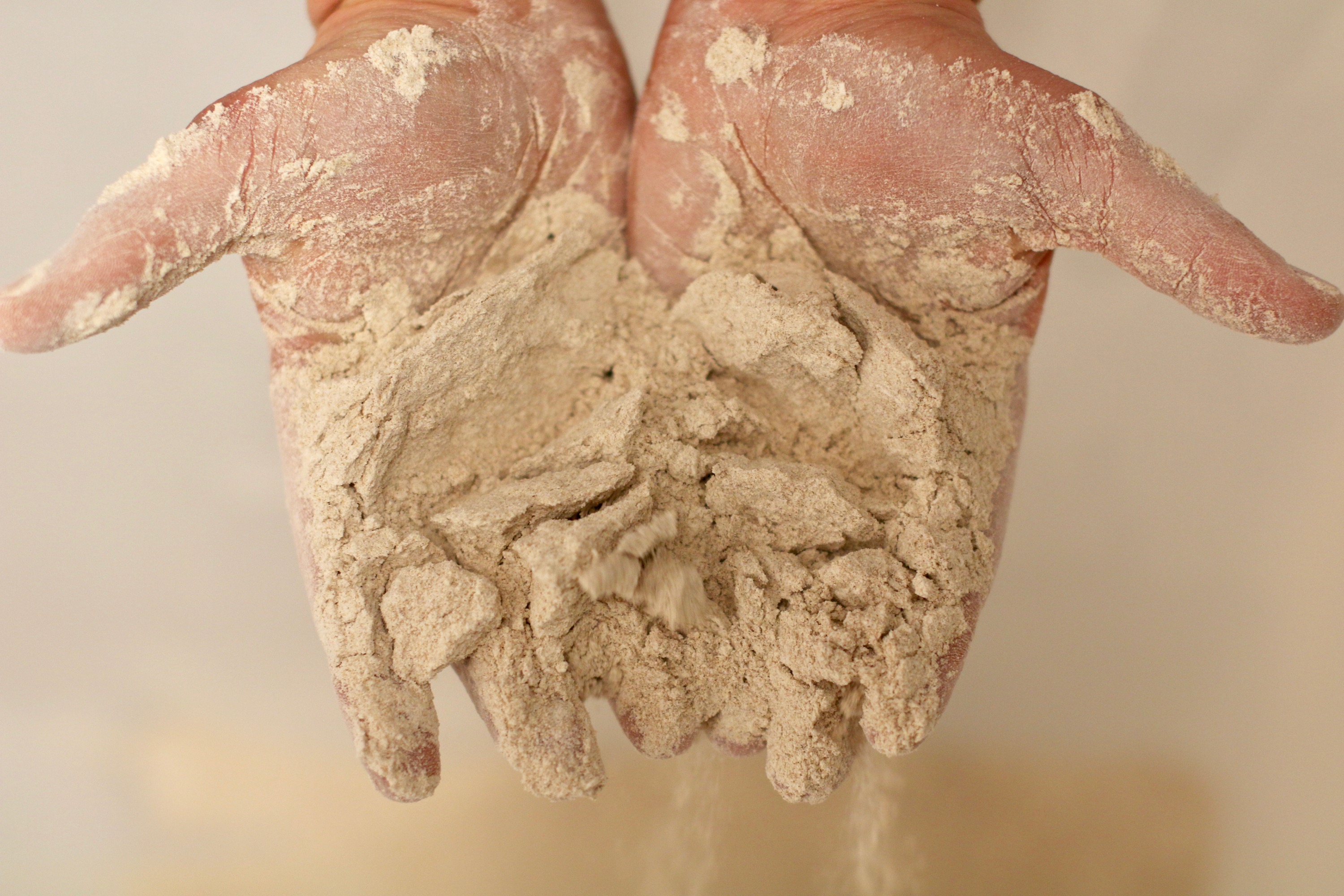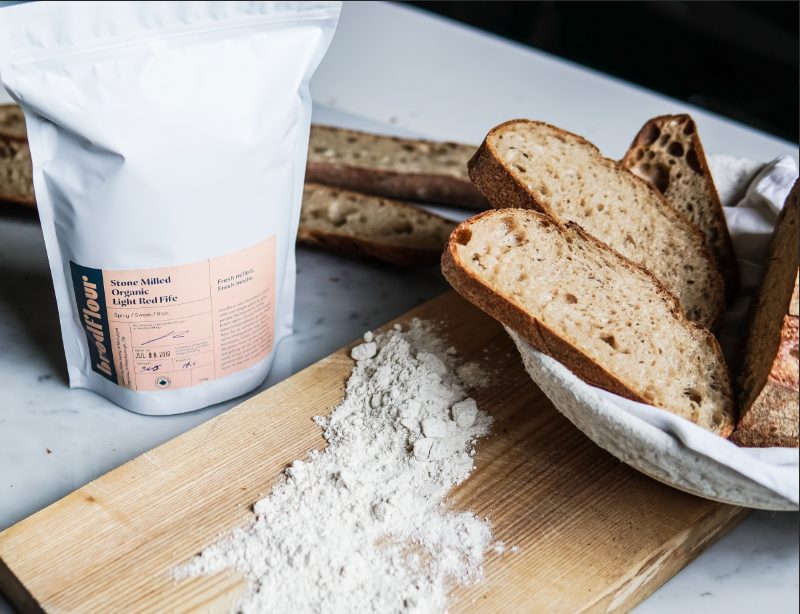As you read in our last blog post, Why Choose Fresh-Milled Flour, we prefer to use organic fresh-milled flour rather than shelf-stable processed flour any day (every day, in fact). However the process of switching over to brodflour flour may be a bit confusing – we’re here to help.
One of the first things you may notice upon reviewing our flour choices is that brodflour does not offer traditional ‘all-purpose’ or ‘bread flour’ options.
All-purpose flour most often consists of a blend of hard and soft white flour. It is processed upon milling to use only the endosperm, the starchy inner layer of the grain. The mix of soft and hard flours means that it works well for a wide variety of uses from cakes to pastries to bread.
Typical bread flour uses only hard flour, as the strength of the flour yields more structure and better gluten formation – a necessity for making bread.
Now, where does brodflour’s flour fit in? We’ll break it down for you:
Sifted Prairie Hard Red
Our hero flour, Prairie Hard Red is our main bread flour. It has high protein percentage and good gluten content which allows for a strong crust and an open crumb. We primarily recommend this flour if you are making sourdough but it can also be used for cookies and cakes – you may just need to play with the amount of liquid you add.
Sifted Red Fife
Although Prairie Hard Red flour is our go-to, Red Fife is a close second. A combination of the two flours is what comprises our classic Brown Hearth and Bird Hearth sourdoughs. Red Fife is a good all-purpose flour. It isn’t as strong as Prairie Hard Red and is a great option for pastries, cookies, and cakes. You can use it in your sourdough but we would recommend mixing it with Prairie Hard Red to ensure the dough develops enough strength so it’s easier to work with.
Whole Grain Rye
Rye flour is the primary ingredient in our dense Nordic-style rye loaves. A dark, hard grain, Rye yields a delicious and complex flavour. It can be difficult to work with due to an inability to form gluten structure. For this reason, it is best for denser-style breads and cakes. We use it in our beloved Rye Chocolate Brownie. An important point to note is that rye flour requires a lot more liquid so you may need to be generous with the amount you add.
Sifted Spelt
Spelt flour is a lighter, milder flour and works well in cookies and bars. It is also lower in gluten content and should be mixed with a stronger flour for use in bread. Spelt is good for making cakes, cookies and muffins. Some people report having an easier time digesting spelt flour which makes it a good alternative to wheat flour – just keep in mind it’s easy to over-mix or over-knead dough made with spelt flour.
Whole Grain Emmer
Emmer is an ancient grain and has a beautiful nutty flavour. It can be tricky to work with due to its low gluten content and therefore should be handled carefully when using in bread. Emmer works well in muffins and quick bread like banana or soda bread.
Whole Grain vs. Sifted Flours
Although all brodflour flour utilizes the whole grain when milling, some of our flour is sifted so that only the finer flour is packaged to sell. Whole grain flour is not sifted and therefore includes the entire ground grain – the bran, germ and endosperm. Although considered healthier, flour with bran absorbs more water and can produce denser, less predictable results. For this reason, many bakers prefer sifted flour and by putting our flour through the sifting process, we can help ensure consistency of the final product.
No matter what option you’ve chosen, it is important to store it properly in order to get the most out of your fresh-milled organic flour. We recommend storing your bag of flour in the fridge for up to 3 weeks or in the freezer for up to 6 months.


